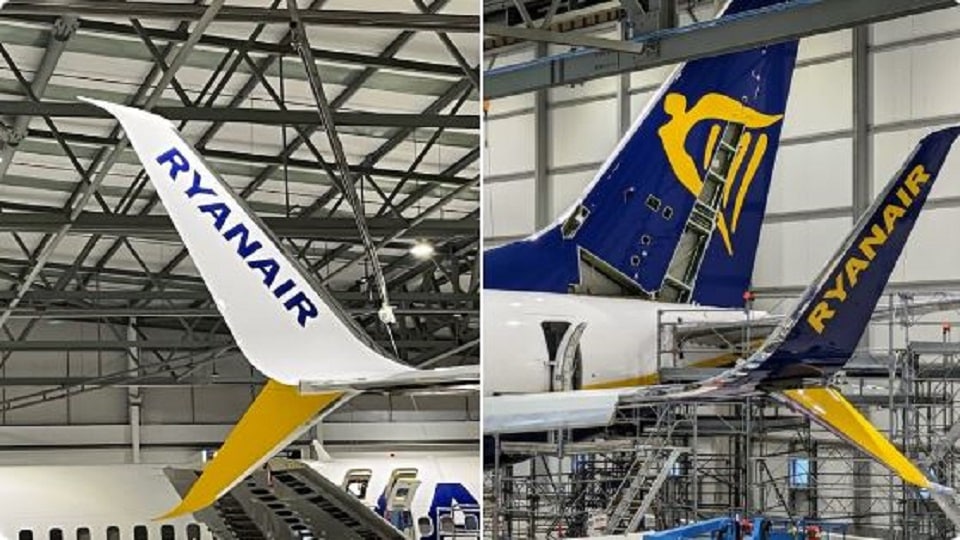Aerospace
Ryan Air has developed new strategies to reduce carbon emissions.

Ryan Air constantly innovates to reduce the weight of the aircraft by removing window coverings, seat trays, blankets, and many other items that it believes are not necessary but will aid in weight reduction and ultimately increase fuel efficiency. However, it is currently considering scientific techniques to improve fuel efficiency and decrease drag.
Qantas and Airbus Partnership for the biofuel industry.(Opens in a new browser tab)
As part of a $175 million deal with Aviation Partners @Boeing , @Ryanair today took delivery of the first of over 400 Boeing 737-800s with split scimitar winglets fitted. This modification will improve the aircraft's fuel efficiency by up to 1.5% pic.twitter.com/ra11vg7CgD
— Kurt Hofmann (@HofmannAviation) January 23, 2023
As part of a $175 million deal with Aviation Partners. In addition to lowering emissions, Ryanair hopes that this change in the replacement of winglets will result in a 1.5% reduction in fuel usage. Ryanair expects to save $30 million in the same six-month period while typically spending $2.18 billion on fuel.
“This investment in our fleet demonstrates that we are setting the standard for sustainable aviation as Europe’s most ecologically friendly major airline. We will be able to achieve our challenging environmental goals and reach net zero emissions by 2050 with the aid of our winglet technology. We are thrilled with APB’s creative winglet designs and eager to install them on more than 400 of our aircraft to further cut our emissions, not just on this first one.
Do they come with the LED strobe light?
— Juan Alonso (@VNAVPTH) January 23, 2023
Following a $175m agreement with Aviation Partners Boeing (APB), Ryanair, Europe’s No.1 airline, today (23 Jan) installed Split Scimitar Winglets to the first of over 400 of its Boeing 737-800 Next Generation aircraft. This modification will improve aircraft fuel efficiency by up to 1.5%, reducing Ryanair’s annual fuel
Ugly but might reduce consumption, right?
Change the engine to 100% ecologically produced hydrogene
And turn also oaint into a solar panel ..
With that xombination you could almost fly for ever and free— Tsikwatechannel (@TSIKWATECHANNEL) January 23, 2023
As Ryanair grows to carry 225m passengers by FY26, this initiative will further the airline’s target of net zero by 2050.

Aerospace
Boeing Transfers Rocket Stage to NASA, Paving Way for Human Moon Mission

Boeing has achieved a significant milestone by providing NASA with the second core stage of the Space Launch System (SLS) rocket.
This crucial component, crafted at NASA’s Michoud Assembly Facility (MAF), is set to propel the Artemis II crew into lunar orbit, marking humanity’s return to deep space after a 50-year hiatus.
The monumental Boeing-built rocket stage, the largest element of the Artemis II mission, will embark on a journey aboard the Pegasus barge, traveling 900 miles to NASA’s Kennedy Space Center.
Comparison of two legendary aircraft B777x vs B747 aircraft:Click here
Upon arrival, it will be meticulously integrated with other essential Artemis II components, including the upper stage, solid rocket boosters, and NASA’s Orion spacecraft within the iconic Vehicle Assembly Building. This intricate integration process is a vital step toward the eagerly anticipated Artemis II launch, slated for 2025.
“Boeing-built products helped land humankind on the moon in 1969, and we’re proud to continue that legacy through the Artemis generation,” remarked Dave Dutcher, vice president and program manager for Boeing’s SLS program. “Together, with NASA and our industry partners and suppliers, we are building the world’s most capable rocket and paving the way to deep space through America’s rocket factory in New Orleans.”
NASA, Lockheed Martin Reveal X-59 Quiet Supersonic Aircraft:Click here
The delivery of Core Stage 2 marks a significant achievement in the evolution of the SLS rocket. Towering over 200 feet and powered by four RS-25 engines, this core stage, coupled with two solid-fueled booster rockets, will generate a staggering 8.8 million pounds of thrust. This immense power is crucial to launching Artemis II and future missions into the vast expanse of space.
The SLS rocket stands unparalleled in its capability to transport both crew and substantial cargo to the moon and beyond in a single launch. Its extraordinary capacity will facilitate the delivery of human-rated spacecraft, habitats, and scientific missions to destinations including the moon and Mars, ushering in a new era of space exploration.
-

 Travel1 week ago
Travel1 week agoAir India to Expand US Operations with Three New Routes After a Decade
-

 Travel2 weeks ago
Travel2 weeks agoWhy We Should Avoid These Stamps in a Passport
-

 Airlines1 month ago
Airlines1 month agoInvestigations Reveal Fake Chinese Titanium in Boeing and Airbus Jets
-

 Tech4 weeks ago
Tech4 weeks agoChina’s CATL Plans 1,800-Mile Electric Plane Launch by 2027
-

 Airport3 days ago
Airport3 days agoTop 10 Largest Airports in the World by Size
-

 Aerospace4 weeks ago
Aerospace4 weeks agoChina’s Fighter Jets Turn Wings into Autonomous Drones
-

 Airlines4 days ago
Airlines4 days agoAir India Rolls Out A350s for Delhi-New York JFK and Newark Routes
-

 Defence3 weeks ago
Defence3 weeks agoBoeing Enhances Chinook with New Engines and Block II Upgrades at $96 Million







